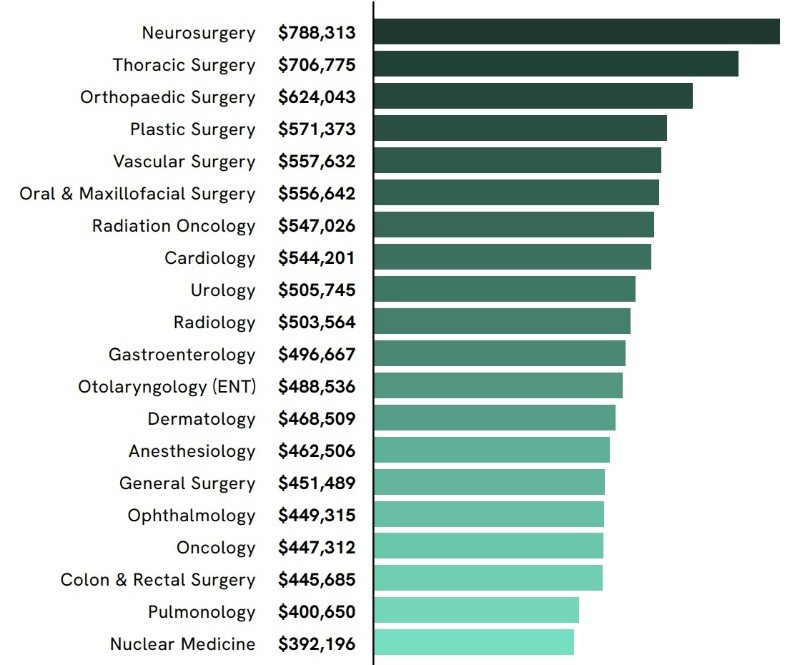
In a striking revelation from recent Bureau of Labor Statistics data, medical professionals dominate America's highest-paying occupations, with 16 out of the top 20 spots held by different types of physicians.
Leading the pack, pediatric surgeons command an impressive average annual salary of $449,320, followed by cardiologists at $423,250 and orthopedic surgeons at $378,250. The only non-physician positions in the top 20 belong to dental professionals, including dentists, orthodontists, and dental surgeons.
The medical profession's financial dominance surpasses other prestigious fields like engineering, computer science, and law. While corporate CEOs and law firm partners can earn more, they represent a small elite subset rather than an entire professional category.
Several factors contribute to physicians' exceptional earnings:
Extended Education and Working Hours Becoming a doctor requires extensive education - undergraduate studies, medical school, and residency training. Most physicians work between 40 to 60+ hours weekly, with each additional year of training translating to approximately $143,000 in extra annual income.
Limited Supply The United States has fewer doctors per capita than other developed nations - 2.7 per 1,000 patients compared to France's 3.4 and Germany's 4.5. This scarcity stems from restricted medical school enrollment and limited residency positions.
Specialty Earnings Top-earning medical specialties for doctors in their peak years (ages 40-55) include:
- Neurosurgery: $920,500
- Orthopedic surgery: $788,600
- Dermatology: $655,200
- Cardiac surgery: $607,300
- Ophthalmology: $597,000
Government Price Setting Medicare's pricing structure for medical services contributes to high healthcare spending, representing at least 17% of the nation's GDP. Unlike other industries, patients have limited ability to compare prices, creating a unique market dynamic where the government acts as the primary price setter.
Medical school graduates often start their careers with over $200,000 in debt, making these high salaries necessary for debt repayment and compensation for years of training. The American Medical Association notes that these earnings help doctors recover from their substantial educational investment while addressing the growing challenges of physician burnout and an aging medical workforce.